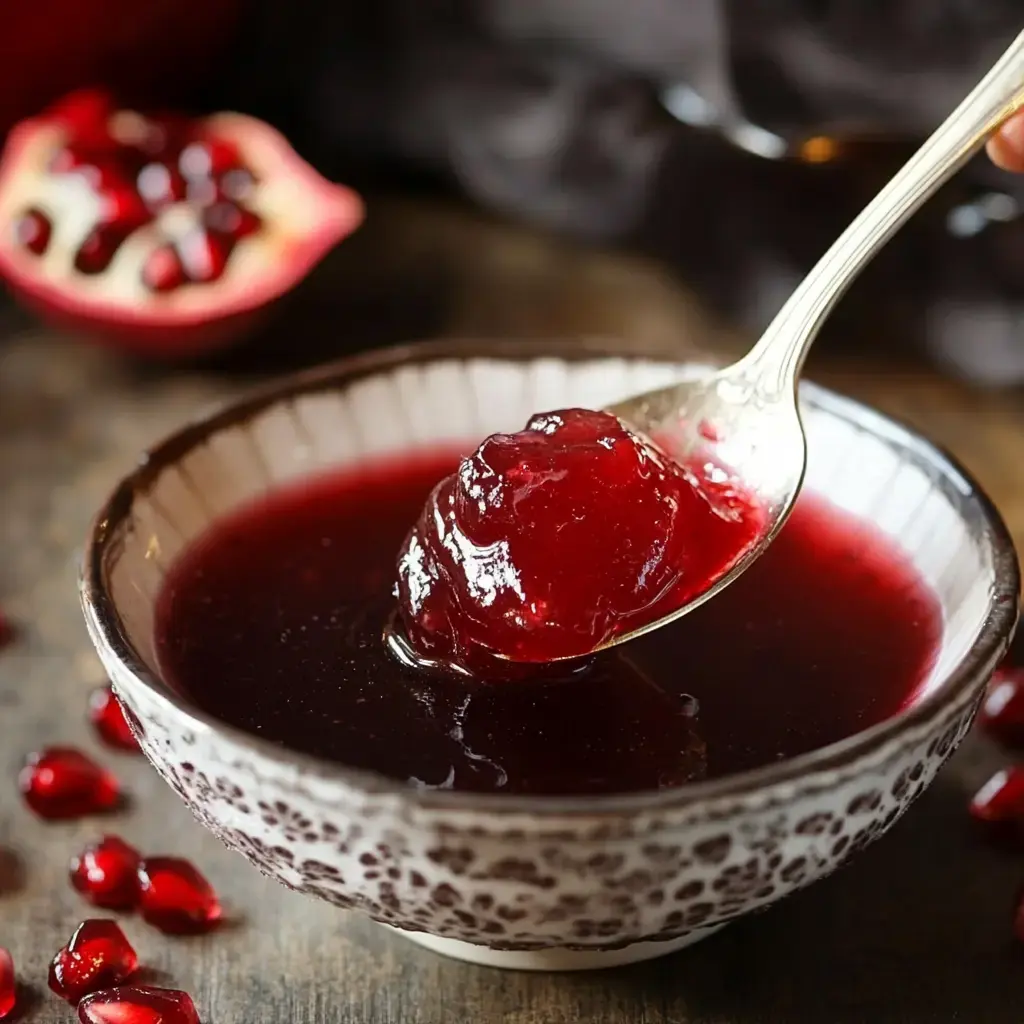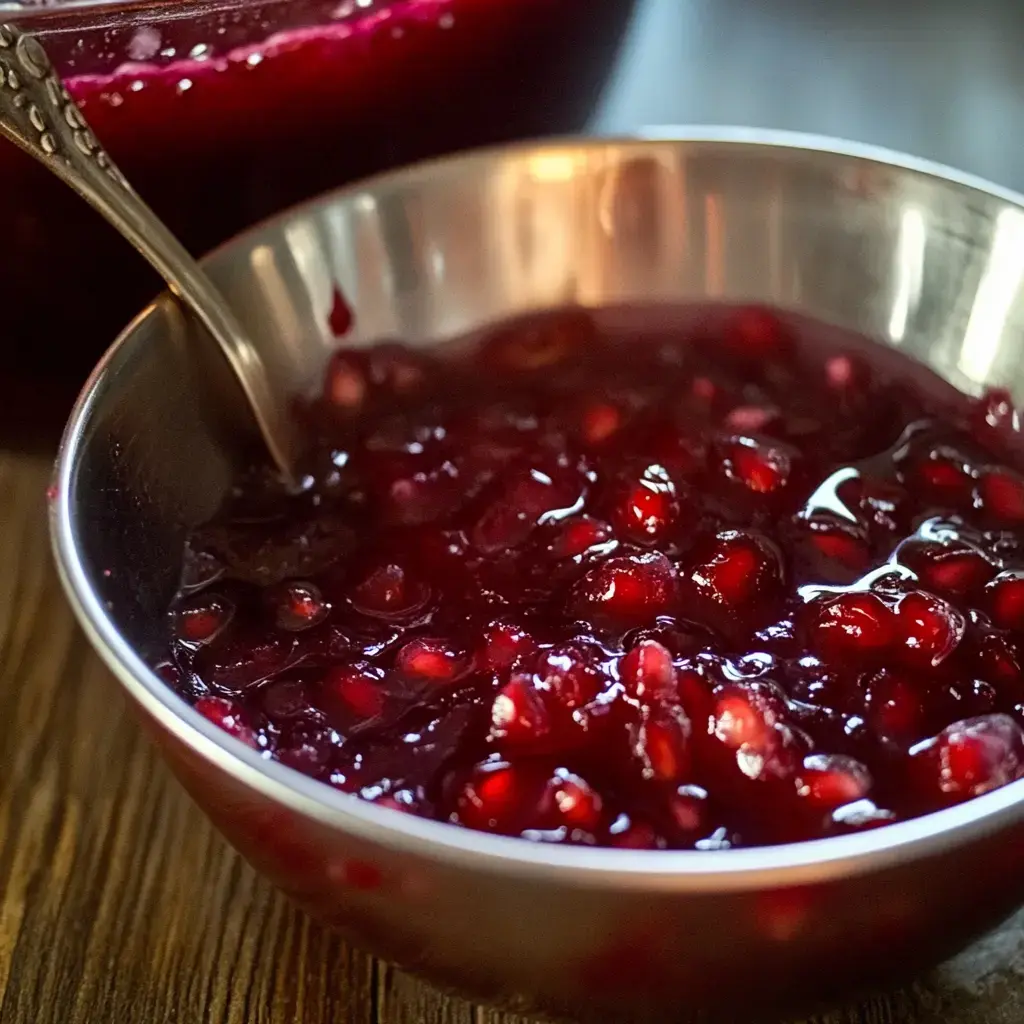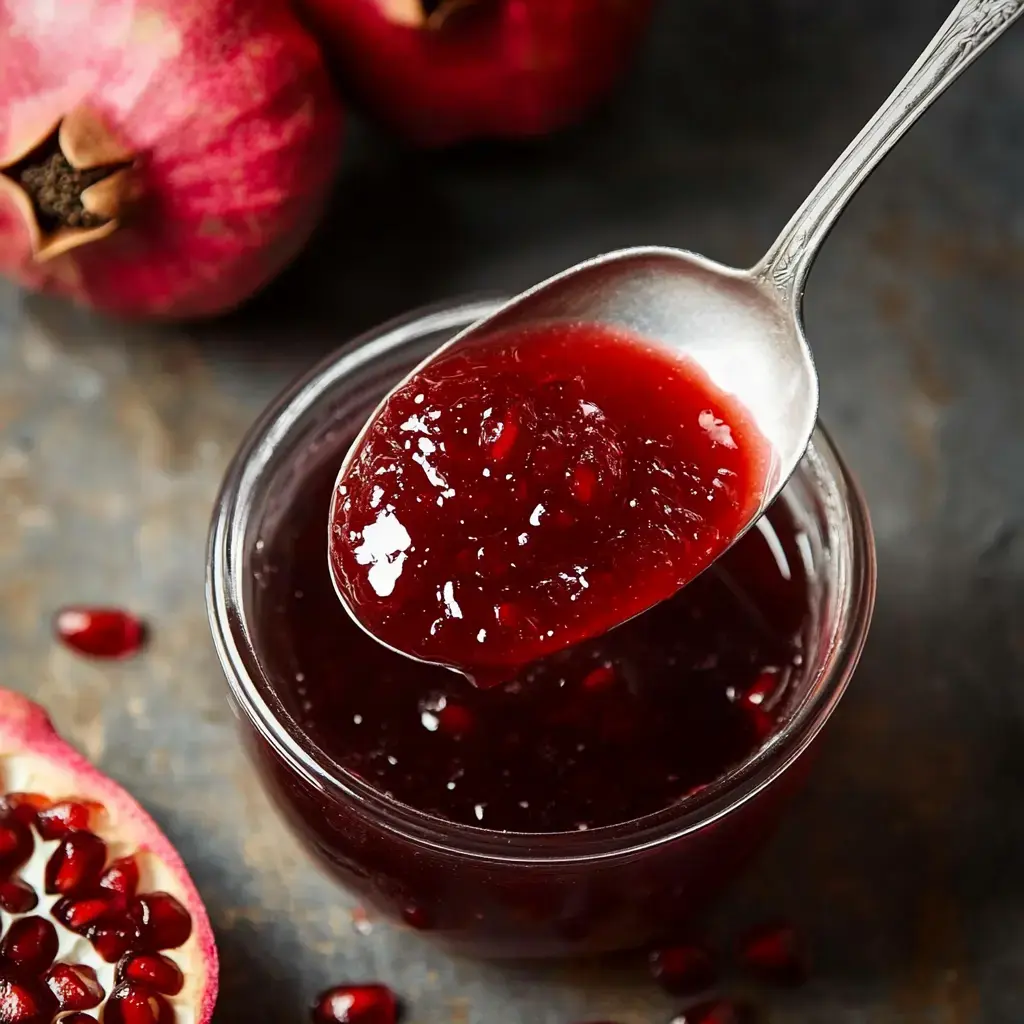 Pin it
Pin it
This sweet pomegranate jelly brings me back to sunny afternoons. It's packed with the flavor of real pomegranates and just enough sweet stuff so it never tastes too sharp or too sugary. I learned how to make it from my grandma, and every year when pomegranates pop up at the market, I go for it again.
Standout Pomegranate Jelly
There's something awesome about this jelly in your kitchen. It brightens up toast, livens up some plain yogurt, and even jazzes up chicken off the grill. The ingredients list is super short—just pomegranate juice, pectin, and sugar. That juice brings a natural color and taste a jar from the store just can't beat. Pick up extra pomegranates when they're cheap so you can enjoy this jelly for months.
Ingredients
- White Sugar: Ordinary sugar gives the jelly its sweetness and brings out the bright red look
- Pomegranate Juice: Go for juice that doesn't have anything added—pure juice gives you the most flavor
- Unsalted Butter: Just a tiny dab helps keep foamy bubbles away when things get hot, but you can leave it out
- Pectin: Regular powdered pectin from the shop helps your jelly get that nice wobble
Instructions
- Last Step: Hot Water Bath
- Once you've filled your jars, dunk them under boiling water. They should be covered. Let them simmer for 10 minutes. Pull them out and set them somewhere safe to cool down.
- Jar Time
- Ladle the hot, steamy jelly right into your jars while they're still warm. Leave a little space up top. Grab a towel and wipe the edges, then twist on the lids.
- Scoop and Skim
- Take your pot off the stove. Gently scoop off any foam that's hanging out on top.
- Sugar In, Keep Cooking
- After your pot bubbles up, add all the sugar in one go. Stir until it starts boiling again. Let it go for a full two and a half minutes.
- Warm Up the Jars
- To get jars ready, soak them in hot water for a few minutes, then grab them out (watch your hands!) and place on a kitchen towel.
- Set Up Your Juice
- If you've got whole pomegranates, blend the insides and push everything through a cloth. Make sure there aren't any pieces hanging around.
- Start It Off
- Pour juice, pectin, and a bit of butter (if you're using any) into a large pot. Turn the heat up and stir as it starts to get bubbly.
- Prep the Jars
- Wash jars, lids, and bands with hot soapy water, then let them dry off on a towel.
 Pin it
Pin it
Homemade Pomegranate Jelly Fun
Every time I pop open a jar, it feels like a treat. The jelly is bright red and kind of tangy-sweet, way better than anything in a store bottle. My kids love to watch it jiggle on bread, and I get a kick out of knowing what went into every jar.
Signs of Great Jelly
Great jelly has to be see-through and hold its shape when you scoop it—it shouldn't have chunks, just stretchy, shiny goodness. Jelly is different from jam because it's super smooth. When the light hits a fresh jar, it looks like a jewel.
Explaining Pectin
Pectin is what gives jelly its funky wobble. Pomegranates don’t have much naturally, so tossing in a packet is what sets everything in under half an hour. The regular kind from the store hasn’t ever let me down. No need to stand at the stove for hours or strain juice overnight like my grandma used to.
Choosing Your Pomegranate Juice
The juice you use really matters. Fresh pomegranate juice works best if you can find it, but store stuff is fine—just double-check that it's pure. If it says anything about other fruit or extra sugar, skip it and look for one that’s only pomegranate.
 Pin it
Pin it
Getting Just the Right Texture
Making jelly isn’t too tricky, but you do need to pay attention. Always mix the pectin and juice first, start simmering, then add sugar once it's hot. Boil it for exactly 2 1/2 minutes for that wobbly set—add a minute if you want it firmer. Skim the bubbles off at the end so it looks super nice.
Frequently Asked Questions
- → Why do I need pectin?
Pectin is what makes jelly firm - without it, you'd end up with syrup! Natural fruit pectin isn't strong enough here, so go for a powdered one like Sure-Jell. Add it during boiling or the jelly won't set right.
- → Is butter really needed?
Butter helps reduce foam while cooking, keeping the jelly clear. If you skip it for vegan options, make sure to skim off foam carefully. Coconut oil is another option. Without it, use slightly lower heat to avoid extra foam.
- → Can I use bottle juice?
If it's 100% pomegranate juice, you're good to go—check the label! Fresh juice has more punch but takes extra effort. Avoid blends or cocktails. You'll need 4 cups of juice per batch. Strain seeds well when juicing fresh.
- → How do I store it?
Unopened jars last up to a year in a cool, dark spot. Once opened, stash them in the fridge for up to 3 months. Check for strange smells or mold before using. Seal jars well and water-bath process for longer shelf life. Avoid freezing; it messes with texture.
- → Jelly won't set - help!
If it hasn't set, reheat with extra pectin—about half a packet per batch. Add more sugar if needed, and cook to 220°F. Test a small spoonful on a cold plate before reboiling everything. Be patient—jelly can take up to two days to fully set.
Conclusion
Crazy about pomegranates? Turn them into a zesty meat sauce, fresh juice for cocktails, or even a refreshing sorbet. That bright flavor works for every occasion!
